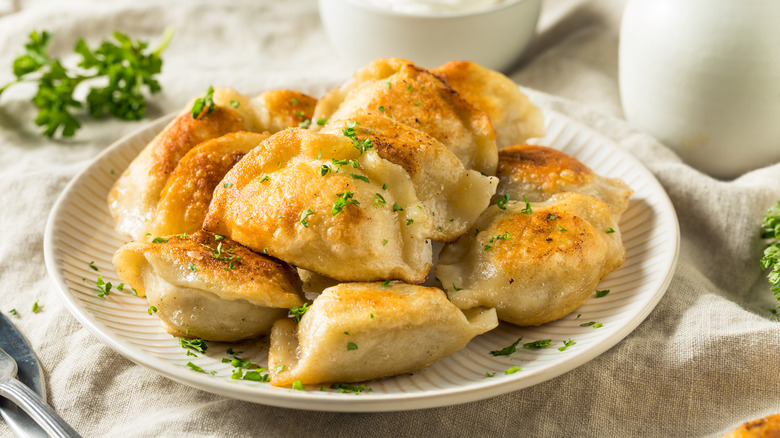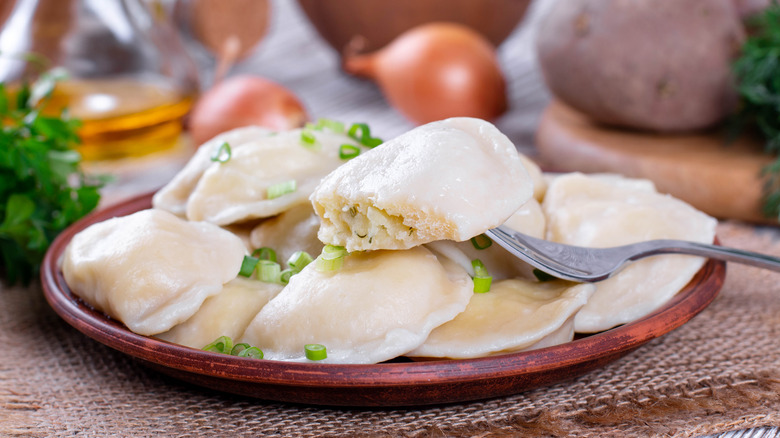What Is The Best Way To Cook Frozen Pierogi?
When it comes to Polish food, pierogi are a fan favorite. In America, they're one of Eastern Europe's best known dishes, and have made a name for themselves as a comfort meal. According to the restaurant Polish Villa, pierogi first came to the United States at the start of the Great Depression. By the 1960s, they had become a staple in the ranks of frozen supermarket foods.
Similar to ravioli — dough that is shaped, stuffed, then boiled — pierogi can take many forms and fillings. For a traditionally Polish meal, stuff your pierogi with some combination of cheese, meat, and potatoes. If that sounds a little dense, sauté some onions on the side. Thin, buttery onions complement the hearty, albeit delicious, nature of any plate of pierogi.
As for how to cook your pierogi, boiling is typically your best, most traditional bet. According to The Polonist, fresh or frozen pierogi should be boiled in a pot of salted water. Once they float, give them another few minutes and they're good to go. However, boiling is not a hard-and-fast rule. Rather, there are a few techniques you can choose from, each of which is certain to get your pierogi dinner table-ready before you can even crack open a Polish lager.
Boiling is a classic technique — though it's not essential
One way or another, frozen pierogi must be properly cooked before serving. Yet while boiling is authentically Polish, you can alternatively opt for a variety of other techniques. According to The Three Snackateers, frozen pierogi can be boiled, sautéed, baked, deep-fried, air-fried, or grilled. If you're feeling creative, you can even combine a few techniques, opting to boil your pierogi before throwing them in the pan to reduce the time it takes to heat them up. Add a pat of butter to crisp up the dough.
Clearly, cooking pierogi is all about preference, so you have plenty of room — and plenty of dumplings — to experiment. Regardless of how you cook your dough, however, opt for a dollop of sour cream on the side. Per Livestrong, sour cream makes for a complementary dipping sauce, as well as yogurt, applesauce, or cottage cheese. While not essential, sour cream — much like boiling — is traditional for a reason; taste it, and you'll understand why.

